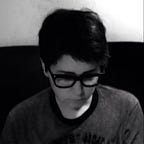Pain Body
The pain body is similar to the body, but its geography is different, its scale. The pain places are large, loud. The pain feet (when they burn, when they ache, when they try to run away to someplace painless) are bigger, take up too much space and start somewhere below the knee. It’s hard to tell where pieces and parts of the pain body are. Sometimes the pain body has feet. Sometimes a face or parts of it (sinuses, teeth). It never has specific organs just places inside that sometimes map to the anatomical model and sometimes don’t map to anything at all. This is why MRI’s and CT’s often don’t capture pain. The pain body has different geography, the way some maps are cities you don’t recognize even though they are maps of your city, your town.
The pain body is not a real body. The real body doesn’t scream and cry the way the pain body does. The real body does what is told, quietly. The real body is invisible. Even when you look at it in the mirror, you are not seeing the real body. You can only see the real body through the pain body and then it is too late; the real body is already gone beyond the horizon. The pain body is not a real body, but it is the only body we can know. It tells me about itself endlessly.
The pain body is always changing, faster and more abruptly than the body.
It sounds like I’m saying the body, the real body, is a body without pain, but that isn’t what I’m saying. I’m saying there is no body without pain. The pain body was always your body, you just forgot. Or ignored it. The pain body grows and grows the less we feed it.
The pain body lives inside the body and is also its skin (its surface area, its bound). The pain body is the only way I know I have a body (mirrors and cameras lie). Pain is what is out there even when it is in here. We can only know what is out there through the pain body so there is no body without pain so what is the body?
Doctors want you to point at the pain body and tell them where things hurt and how much, but the pain body is too far inside under too much flesh and it isn’t the same shape or size as the visible body they measure. The pain body is invisible, it speaks another language, it moves. The pain body is sometimes bigger than you are, bigger than the room. The pain body is the definition of fucking crazy. The pain body is a ghost, a hallucination. No one believes in the pain body, not even you.
After a brief remission last fall, I had a pretty terrible flare. The pain was exquisite (I love that description of pain — as if this particular pain was a masterpiece, a perfection of pain, a Mona Lisa). I felt like I had the flu, like my bones were breaking. I had been trying to grow my hair out from a pixie cut, but it would break off somewhere around my ear lobes. I’ve always had thick, wonderful hair, but it was suddenly sickly too. At some point, absolutely delirious with pain and exhaustion, frustrated and furious, I became convinced that my hair contained all the pain in the same way it holds chemical memories that your employer can use to test you for narcotics. So I cut it off down to about an inch and a half. For a moment, I felt lighter, brighter, but the pain was still attached to me. Maybe I should have performed some ritual with the cut off hair. Buried or burned it. Maybe I didn’t do enough (that is always the next thought: what could I have done differently to keep the pain away?). Or maybe the story I was telling about the pain body didn’t have an ending (no burning or burying, no ritual) so it keeps going. Pain is already its own ghost haunting you, haunting the body.
